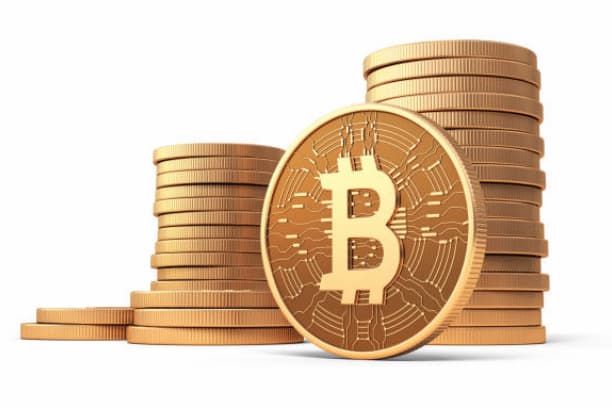How does the futures market affect the spot market? (The relationship between contracts and spot)
When you hear the terms "futures market" and "spot market" you may think they are just different forms of trading, but the truth is that they are inextricably linked. For cryptocurrency investors, it is important to understand how the futures market affects the spot market. Through futures contracts, investors can not only speculate on the price of cryptocurrencies, but they can also influence the price movements of the spot market. This article will give you an in-depth look at the relationship between the futures and spot markets and help you make more informed investment decisions.

Basic differences between the futures market and the spot market
The futures market and the spot market each have different characteristics. The spot market is a market for immediate delivery, where investors trade in cash and buyers and sellers deliver assets immediately after the transaction. The futures market, on the other hand, is a derivatives market where investors trade contracts based on an asset, with delivery of the contract usually taking place at some point in the future, which makes prices in the futures market more predictable and speculative. The way the futures market operates directly or indirectly affects price fluctuations in the cash market, as demand and sentiment in the futures market tends to be mirrored in the cash market.
How the Futures Market Affects Prices in the Spot Market
The linkage between the futures market and the spot market is very close. Simply put, price movements in the futures market usually have an impact on the spot market. For example, when there is a large number of buy or sell orders in the futures market, changes in market sentiment may cause price fluctuations in the spot market. This is because the volume of trading in the futures market tends to be much larger than in the spot market and the leverage effect of futures trading makes the market more sensitive. When prices in the futures market rise, many spot investors see a possible upward trend in the future, which can further drive up spot prices.
The speculative nature of the futures market can also lead to short-term price fluctuations. For example, when there is a large number of long or short positions in the futures market, this may lead to inflows or outflows of capital in the cash market, further exacerbating price volatility. In such cases, short-term price movements in the futures market often serve as a predictor of the spot market.
Linkage between contract and spot markets
The linkage between the futures contract market and the spot market is manifested in market sentiment in addition to the effect of price fluctuations. When the price of the futures market fluctuates drastically, traders in the spot market may adjust their investment strategies according to the trend of the futures market. For example, when the futures market rises or falls sharply, traders in the spot market may sense panic or optimism in the market and change their trading behavior. This emotional linkage often results in the price of the spot market following the trend of the futures market.
The "long/short ratio" in the futures market can also affect the spot market. When long positions in the futures market significantly outnumber short positions, it means that most investors in the market expect prices to rise, which attracts more capital into the spot market, further driving up spot prices. On the other hand, when shorts are dominant, the spot market may also be affected by negative sentiment.

How the futures market reflects future expectations in the cash market
The futures market is often regarded as a leading indicator of future movements in the cash market. As delivery of futures contracts is usually set in the future, prices in the futures market reflect the market's expectation of the future price of an asset. When prices in the futures market indicate bullish or bearish sentiment towards future prices, this indirectly affects the sentiment in the cash market and pushes cash prices to move in the expected direction.
For example, if the futures market is generally bullish on a cryptocurrency, this means that the market is optimistic about the future price of that currency. This sentiment will be transmitted to the spot market, attracting more investors to buy spot, which in turn will drive up the price in the spot market. Conversely, if the futures market is pessimistic about future prices, the spot market may experience selling pressure due to panic, resulting in lower prices.
Indirect Effects of the Futures Market on the Spot Market: Leverage and Capital Flows
Leverage in the futures market is an important factor affecting the cash market. Because futures trading allows investors to use leverage, it means that investors are able to take larger positions with less capital. When price fluctuations in the futures market trigger capital flows, these funds may flow further into the spot market, driving price movements. Such capital flows, whether due to gains or losses in the futures market, are indirect drivers of price movements in the spot market.
For example, when there is a large number of closures or build-ups in one direction in the futures market, there is an acceleration of capital flows in the market, which may be redirected to the spot market, causing sharp fluctuations in spot market prices. This indirect effect is often impossible to ignore, especially at times of extreme market sentiment.
Correlation between futures and spot markets and risk management
Understanding how the futures market affects the spot market helps cryptocurrency investors manage risk when trading. Because price movements in the futures market often precede those in the spot market, investors can predict short-term movements in the spot market based on what happens in the futures market. The leveraged and high-risk nature of the futures market also exposes investors to potential risk of loss. Particularly in the event of high market volatility, price movements in the futures market may quickly affect the spot market, thereby increasing the risk in the spot market.
Therefore, investors need to adjust their position strategies in the cash market according to the trend of the futures market and use leverage carefully. It is advisable to set reasonable stop-loss points when trading futures and to keep an eye on the sentiment of the futures market to avoid over-reliance on the price movement of a single market.
Frequently Asked Questions Q&A
1. Will price fluctuations in the futures market be immediately reflected in the spot market?
Not necessarily. Price fluctuations in the futures market usually have an impact on the spot market, but the exact timing and magnitude depends on market sentiment and capital flows. In some cases, the response of the spot market may be delayed, especially when market sentiment is uncertain.
2. How should investors take advantage of the volatility of the futures market to trade spot?
Investors can predict short-term trends in the spot market based on price movements in the futures market, but at the same time, they should pay attention to risk management. In particular, the leverage effect of the futures market may make the volatility of the spot market even more drastic, thus requiring prudent operation.
3. Do all futures markets have an impact on the spot market?
Not all futures markets have an impact on the spot market. The impact depends largely on the size and liquidity of the market. For cryptocurrency markets, futures markets on large exchanges usually have a greater impact on the spot market.














